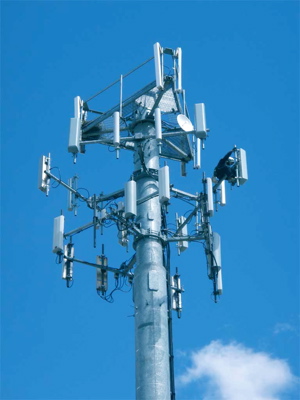The biggest buzzword in today’s mobile market is 4G LTE. Yes, it represents something real: a network upgrade that provides faster data speeds and more efficient transfers. But it wasn’t so long ago that LTE was not considered 4G; it wasn’t until Verizon and other companies lobbied heavily that LTE technology was even considered fourth generation. Still, the technology is changing mobile as we know it.

Perhaps the most impacting change of the LTE revolution is the consolidation of services. Since the advent of 3G networks, cellular operators have used divided services. Voice and text messaging services run on legacy 2G networks, while mobile data is delivered over 3G or 4G frequencies. But with LTE comes the promise of a data-driven market. Soon enough all of our voice, messaging, and data services will simply be data, running on LTE networks.
Yet not all spectrum is fit for LTE. What’s to become of those old 2G networks that used to handle our voice calls and text messages? It might seem as though they’ll simply become obsolete. But with a scarcity of cellular spectrum, any available network capacity is valuable. And as it turns out, 2G networks might provide plenty of function for our everyday lives.
The smart grid
For those unfamiliar with smart grid technology, it is the next step in providing efficient energy solutions. The power company ABB has plenty of resources on its smart grids page, including news, blogs, and videos. It all goes a long way into explaining how smart grids work, and how they’ll distribute energy based on need. That level of efficiency will help us use less energy overall, which means we’ll have more energy for the times we need it.
They key to the smart grid is monitoring. In order to distribute power to the areas that need it, power companies need signals from that power-hungry area. While there have been a few implementations of this, cellular networks have provided the most accurate and instant information. As operators start to migrate cellular data away from 2G networks, they can start renting that spectrum to power companies for smart grid usage.
The key to this, and other 2G spectrum usage, is that smart grids do not consume much data. They send simple signals, which can travel quickly over 2G networks. It would be a waste, in fact, to use 4G or even 3G networks to transmit this data. Our old technology comes in quite handy, it seems.
Point of sale
It might seem arcane now, but there were days when processing a credit card would take a few minutes. Even after the abolition of manual machines and the move to computers, sending data signals could take two or three minutes. That’s because the machines had to dial up to the server with each transaction. So you’d swipe your card, the machine would initiate the call, validate the information, and then finally approve it. Needless to say, it often caused lines at department stores to back up.
In modern times we have moved to always-on connections, much like we have at home with cable modems. Yet many payment companies wish to use the more reliable wireless technology. We’re still seeing this, even as many companies try to maximize their spectrum by migrating 2G networks. In fact, T-Mobile USA has been aggressively using its 2G network for such purposes. They’re reportedly working with Raco Wireless to provide even more point of sale services.
Other uses
There are so many ways that we could connect gadgets and devices to cellular networks — even items that don’t make any sense. For instance, ice vending machines. You know, the ones at stores where you pull out a bag of ice. By connecting these machines to a 2G network vendors could monitor the temperature, ensuring that the ice remains frozen. They could also monitor inventory, knowing exactly when to send a refill.
ATMs around the world could also benefit from cellular connectivity. Many of them suffer the same problem as old credit card machines: they have to dial up to the server for every transaction. By going wireless, they could provide funds more quickly.
In our fast-moving wireless world, the focus is on the newest technology. The 4G LTE networks are what will deliver us information the fastest and most efficiently. Yet it’s old technology that could make the most sweeping changes. As we start to use the old 2G spectrum, we can find that many, many areas of our lives can gain an upgrade.
Joe Pawlikowski writes about wireless technology at a number of niche blogs. He covers issues such as 2G networks at his prepaid wireless blog, Prepaid Reviews.
We write latest and greatest in Tech Guides, Apple, iPhone, Tablets, Android, Open Source, Latest in Tech, subscribe to us @geeknizeron Twitter OR on Facebook Fanpage:
loading...
loading...
